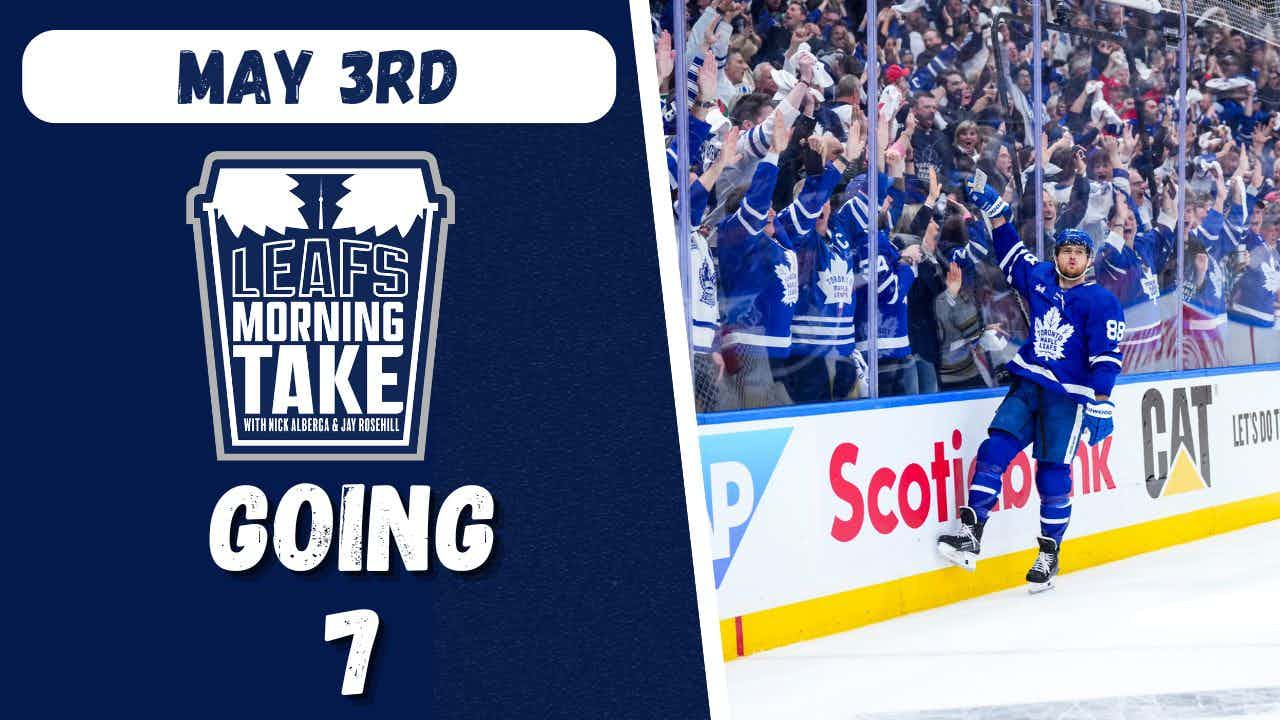Why the Leafs should keep old numbers open for new generations
The Leafs have a lot of players at training camp. Before they made their cuts, in fact, they had almost enough players to take up every single one and two digit jersey number from 1 to 98 (hey, Gretzky). Of course, they didn’t quite get to that point, but a quick glance at the numbers that weren’t taken on the original roster is interesting and outputs as follows:
1, 3, 4, 5, 6, 7, 9, 10, 13, 14, 17, 19, 25, 27, 69, 75, 79, 93, 95, 96, 97, 98.
Some of these numbers are just odd outliers. There’s the fact that nobody really wants 75, 79, 95, 96, or 98; they’re high and non-historic numbers. 97 is probably being saved for Connor McDavid, and nobody wants to be Doug Glatt so 69 remains hilarious but unavailable. Joffrey Lupul theoretically wears 19, but isn’t on the camp roster. The lack of a 3 or 25 is interesting; both are pretty frequently used numbers across the league.
This leaves 1, 4, 5, 6, 7, 9, 10, 13, 14, 17, 27, and 93. Perhaps not coincidentally, that’s the Leafs’ list of retired and honoured numbers, save for the fact that James van Riemsdyk is still wearing Borje Salming’s 21 and that Dave Keon’s 14 isn’t actually up in the rafters as of right now. No matter how you slice it, it’s interesting that of the 22 unavailable numbers, most are common, and all but three of those carry historical significance in Toronto.
With the centennial coming up, there’s a belief that the Leafs are going to show these sweater numbers a heightened level of respect; perhaps retiring all the honoured ones to join Ace Bailey and Bill Barilko as untouchables once and for all. It sounds great, but I feel like we don’t put enough consideration into the oddity of it all.
Over the past few years, I’ve started to get more into pro soccer. I always played the sport as a kid, but never got into the nuances of the huge clubs because I invested so much obsessive time into hockey. Now that this sport doubles as my job, though, soccer has become my “pure” sporting interest, and there are a lot of things that I feel are better executed in the beautiful game. Kit numbers, in a sense, are one of them.
The number on your back in soccer is typically reflective of the position you play. Numbers 1 through 11 typically tie you to a specific regular part of the field, but as such, come with a level of pride, as they confirm that you are a starting lineup calibre player.

Because of this, many clubs have had many greats wear the same number, to the point that associating it a kit with a single player is a generational thing, but not a team history thing. For example, #10 at Juventus carries a tremendous amount of respect behind it, particularly due to the 19-year run that Alessandro Del Piero, the team’s greatest ever player, had with it on his back for much of the journey. When he left, did they rush to take it out of circulation? No. Juventus made sure they put it on the back of someone up front that they felt would carry on his legacy; Carlos Tevez wore it for a few years, Paul Pogba took it over after, and with Pogba’s record-setting departure, Pablo Dybala, a 22-year-old who many would argue is just getting started, is poised to be the next one. Even Del Piero had to be the successor to Roberto Baggio in this regard, and he was Michel Platini’s ambassador of the number as well.
Carrying on the legacy of #10 is so big to those associated with Juventus that offering Sebastian Giovinco the kit number at Toronto FC was one of the big reasons he crossed the pond. But that’s the same for many huge clubs; there’s a certain hour to wearing #7 at Manchester United, #9 at Real Madrid. Even Leo Messi had to prove his salt to take his iconic #10 from an equally iconic Ronaldinho at Barcelona.
While I wish soccer players, on the whole, got a bit more creative with their numbers, I certainly love the idea of carrying on a legacy instead of trying to shut it down. Wayne Gretzky might be #99, but that was because he ended up on a team where #9 was taken, and he wore #9 because he wanted to be Gordie Howe. The Hockey Sweater is one of the most iconic short stories in Canadian literature, and one of the main parts of the plot is about every kid wanting to be Maurice Richard, with his number on their jersey.
You can even look to Toronto’s rafters as proof of why that model makes more sense. Six of the Leafs’ honoured numbers are honoured twice. What if George Armstrong couldn’t wear Syl Apps’ 10? What number do we remember Johnny Bower for if not Turk Broda’s 1? Darryl Sittler wore Frank Mahovlich’s 27, Tim Horton wore King Clancy’s 7, Red Kelly wore Hap Day’s 4, Ted Kennedy wore Charlie Conacher’s 9. In many cases, the more recent wearer ended up making a bigger dent on the history of the Leafs than the already great one that the first one did.
That brings us to an example the current team. Doug Gilmour was a very good player for the Leafs for seven years; my favourite player in blue and white growing up, and the player on the back of my first hockey jersey. Now the Leafs have Mitch Marner, a childhood Leafs fan who wears 93 partially in his honour, and has the potential to be an even more impactful player, and the team rights protection to likely be here for just as long.
For now, he wears #16, which he wears at the international level, but still isn’t distinctly him. Many will say it gives him a chance to make a number his own, but isn’t carrying on a legacy just as important? Heck, isn’t wearing the number you grew up with and cherished more “your own” than taking an easier path to remembrance because the boss told you to?
He’s not the first Leafs player to go through this. Nazem Kadri is hockey’s best #43 now, but 43 was a number assigned to him, not one he wanted. He couldn’t wear his 91 because it was too deemed high, and took heat for wearing #13 on the Marlies because it was in the same system that Mats Sundin played in. Nobody has worn 13 since Mats left, nobody has worn 93 since Gilmour left, and nobody has worn 17 since Wendel Clark left, despite a list of local-born gritty forwards who would’ve loved to carry it on to some extent. Even a number like 28, which shouldn’t be close to out of circulation, has led to people calling Tie Domi “out of respect” to ask for permission to wear it, which is a crazy thought.
They’re only three numbers that have been left completely untouched; the others have been put into circulation in the past. Some who were them weren’t very notable, sure, but they still carried on the meaning and they still played for the crest on the front. Hopefully, that’s a trend that we see continue rather than stop, and the quietly retired numbers go back into circulation.
At the end of the day, we aren’t getting new numbers anytime soon, and those one or two digits on the back and sides of the sweater are one of the only ways for a player to express themselves and, in a sense, tell their story. So why not let them carry on the stories of others too? It just seems like a better way of honouring the past; if you want a new generation of Gilmours, Sundins, Armstrongs and Bowers, making the players feel like those aren’t unreachable standards is a good step in that direction.
AUSTON 4:16

Auston has a new 416 area code. We like to welcome our new-comers into the Nation, warmly… and with T-shirts. Welcome to the Six. Shatter your wardrobe with this fresh Auston 4:16 tee from NationGear.
Recent articles from Jeff Veillette





